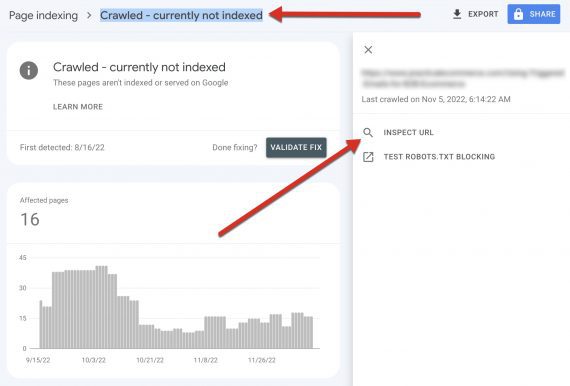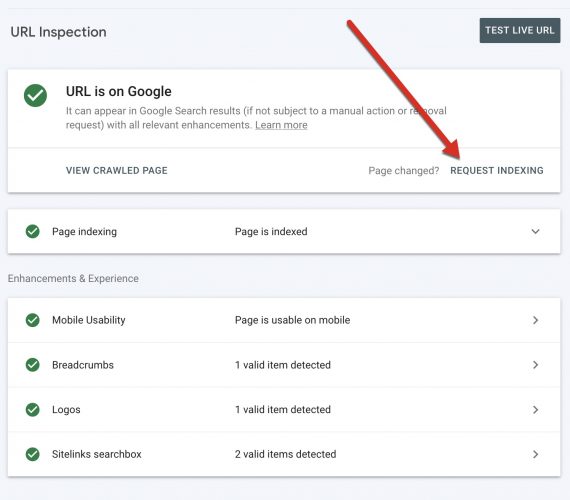
Google generates natural search listings from its database of a whole lot of billions of net pages. Indexing a web page in that database is Google’s first step in figuring out rankings.
“Indexation” in Google-speak means it has added the URL to the database together with key info, on-page (headings, physique textual content, meta tags) and off (inside and exterior hyperlinks, textual content surrounding these hyperlinks, creator information). Google makes use of that information in search outcomes and commonly updates the index.
An organization may block a web page from Google’s index through a robots.txt command, though it’s not foolproof, and Google may nonetheless index it utilizing off-page information.
Given the enormity of its index, Google could require a number of days to find and index a brand new web page. And new pages are listed faster than updates.
The right way to get a web page listed?
Google will usually uncover and rapidly index pages of internet sites with lower than a number of thousand URLs, supplied there are inside hyperlinks to every of these pages. Exterior hyperlinks will pace up discovery, as will the submission of an XML sitemap in Search Console.
As soon as listed, Google will commonly revisit your web site for adjustments.
Google permits requests to recrawl a web site. However frequent requests are sometimes indicators of technical issues. So as a substitute of a recrawl, audit your web site to make sure inside hyperlinks are legitimate and simply crawled. A 3rd-party crawling instrument reminiscent of Screaming Frog can assist.
XML sitemaps are particularly useful for giant, database-driven websites with 1000’s of product pages and a whole lot of classes. Sitemaps will allow Google to entry deeper pages simpler and report again (through Search Console) with structural or indexation issues.
The right way to verify indexing?
There are two methods to inform if Google listed a web page:
- Search Google for web site:full-url (e.g., web site:practicalecommerce.com). If listed, the URL will seem in natural outcomes.
- Verify the “Pages” report on Search Console.
Word that Google can index a web page and never cache it.
Keep watch over the “Pages” tab for indexing glitches. Scroll all the way down to the “Crawled – at present not listed” report for a listing of pages not in Google’s index and the trigger. The report usually features a few non-indexed pages. Nonetheless, if the quantity is rising or various, evaluate your web site for underlying issues.
When looking that report, I usually discover URLs which are really listed, indicating the report is outdated.
Nonetheless, a non-indexed URL can sign a wider drawback. So, once more, rule out that chance earlier than requesting a recrawl.

The “Crawled – at present not listed” report lists pages not in Google’s index and the trigger. Click on picture to enlarge.
The right way to pace up indexing?
The commonest (and legitimate) cause for quicker indexing is verifying a repair — i.e., Google reported an error through Search Console, and also you fastened it. In that case, request indexing by means of Search Console’s “URL inspection” instrument.
Google will e-mail when it verifies the repair and indexes the web page. It often takes a few days.
Use the instrument solely often, actually not day by day. When re-platforming a whole web site to a brand new area or content material administration system, don’t try to make use of this instrument to re-index web page by web page. As an alternative, submit an up to date sitemap in Search Console. That can immediate Google to index your web site rapidly.

After fixing errors on a web page, the “URL inspection” instrument can pace up its indexing. Click on picture to enlarge.